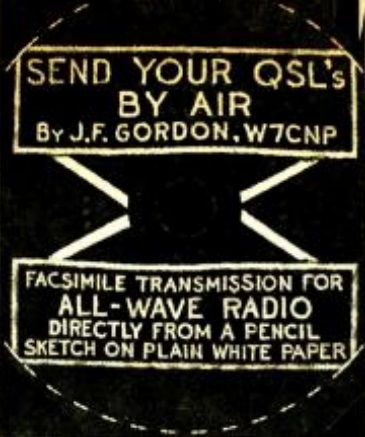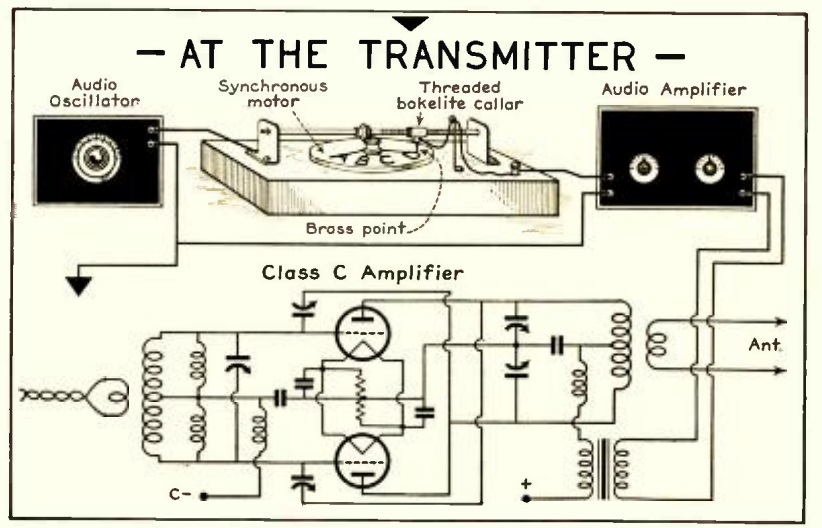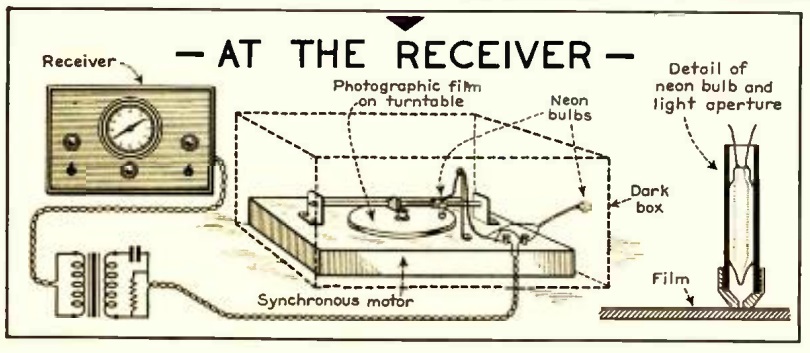Eighty years ago this month, the May 1937 issue of All Wave Radio magazine carried a description by J.F. Gordon, W7CNP, of his method of sending facsimile by radio. The received image is shown above. While the system was quite simple in theory, it does appear to be quite labor intensive.
 The received image, shown above, is reproduced on photographic film. The original transmitted image, drawn in pencil, is shown at the left. Since the entire image is drawn in pencil, it is conductive, and can be scanned by a conductive stylus. There needs to be continuity between all points on the image, and for this reason, the letters are all linked by a pencil line. Before transmission, these lines are covered up with coil dope or another insulating substance.
The received image, shown above, is reproduced on photographic film. The original transmitted image, drawn in pencil, is shown at the left. Since the entire image is drawn in pencil, it is conductive, and can be scanned by a conductive stylus. There needs to be continuity between all points on the image, and for this reason, the letters are all linked by a pencil line. Before transmission, these lines are covered up with coil dope or another insulating substance.
The image is then scanned on a normal phonograph turntable, powered by a synchronous motor to keep the speed at both ends of the circuit exactly the same. The image is scanned by a stylus riding on a threaded rod geared to the turntable motor.
An audio signal is sent through the circuit from the pencil lead to the stylus, and this signal is used to modulate the transmitter.
At the receiving side, an identical turntable is employed. For receiving, the stylus is replaced by a neon lamp. A piece of photographic film is placed on the turntable, which of course needs to be in a darkened enclosure. A second neon lamp is placed outside the box to make sure the system is receiving properly.
The neon lamp is driven by the receiver audio. Assuming everything is working properly, when the film is developed, it sould reveal a negative image of the original pencil disk.



